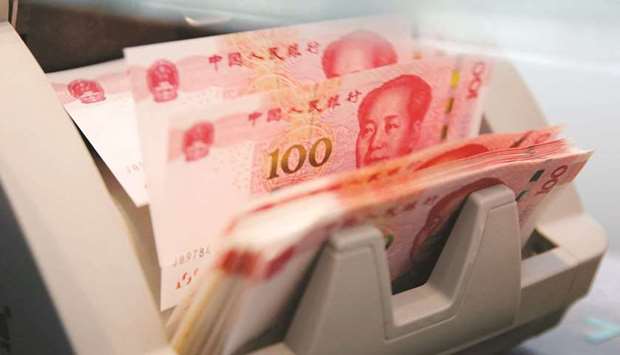China’s central bank asked the nation’s major lenders to curtail loan growth for the rest of this year after a surge in the first two months stoked bubble risks, according to people familiar with the matter.
At a meeting with the People’s Bank of China on March 22, banks were told to keep new advances in 2021 at roughly the same level as last year, said the people, asking not to be identified as the matter is private. Some foreign banks were also urged to rein in additional lending through so-called window guidance recently after ramping up their balance sheets in 2020, one of the people said.
The comments give further detail to what the central bank stated publicly after the meeting, when it said it asked representatives of 24 major banks to keep loan growth stable and reasonable. In 2020, banks doled out a record 19.6tn yuan ($3tn) of credit, with about a fifth directed to inclusive financing such as small business loans. Lending the same amount this year would bring the outstanding balance to about 192tn yuan, an annual increase of about 11%, the slowest pace in more than 15 years.
“On the one hand, there will be slowdown in loan growth, and on the other hand, the slowdown is quite moderate,” said Lu Ting, chief China economist at Nomura Holdings Inc, adding that the pace is line with the PBOC’s stance of making no sharp policy turns.
With the coronavirus largely contained and the economy rebounding, Chinese policy makers have renewed a campaign to curb risks, especially in the financial and real estate sectors. Even if credit growth eases, the prospect of higher interest rates and fewer soured assets may boost the profitability of banks, which saw earnings slump after they were enlisted to help borrowers obtain cheap financing during the pandemic.
The PBOC didn’t immediately comment.
Chinese banks advanced 4.9tn yuan of new loans in the first two months, 16% more than the same period last year, official data show. The central bank told banks in February to keep new lending in the first quarter roughly at the same level as last year, if not lower, the Financial Times reported earlier.
Credit curbs will drain liquidity from the stock market and pressure sectors with high valuations, said Ken Chen, a Shanghai-based analyst at KGI Securities.
The PBOC wants banks to focus on lending to areas such as innovative technology and the manufacturing sector, it said at the March gathering. Earlier in the month, Guo Shuqing, chairman of the China Banking and Insurance Regulatory Commission, warned about bubbles in the property and financial markets, fuelling concerns policy makers will begin tightening monetary policy.
China’s government is taking advantage of the economic recovery to deleverage, a long-standing goal shelved during the trade war with the US and further delayed by the pandemic. Last year’s stimulus pushed debt to almost 280% of annual economic output.
The economy accumulated much of its record debt pile after the global financial crisis, when it binged on credit to avoid the economic slumps ravaging the West. Efforts in 2017 to restrain debt growth, especially in the shadow-banking industry, led to higher money-market rates and a slump in government bonds.

Chinese 100 yuan banknotes are seen in a counting machine at a branch of a commercial bank in Beijing (file).


